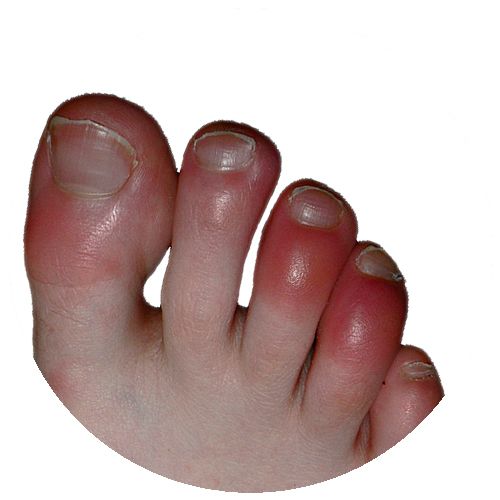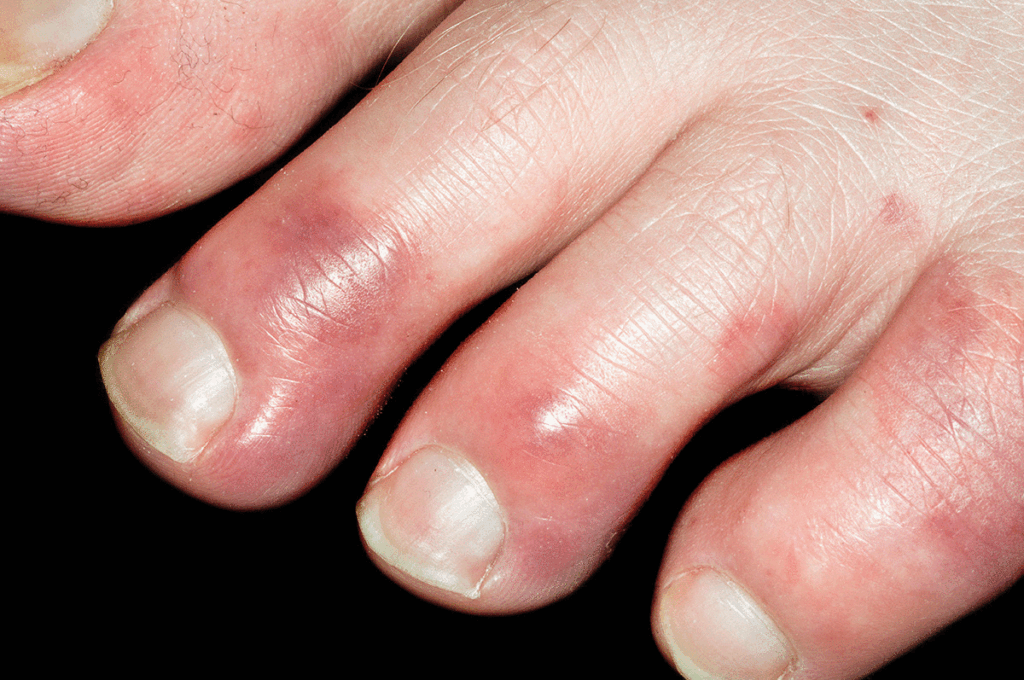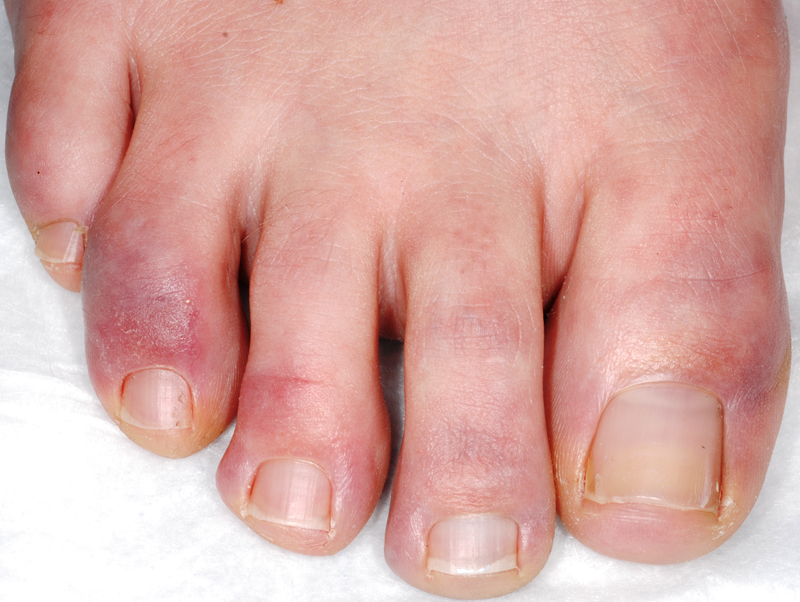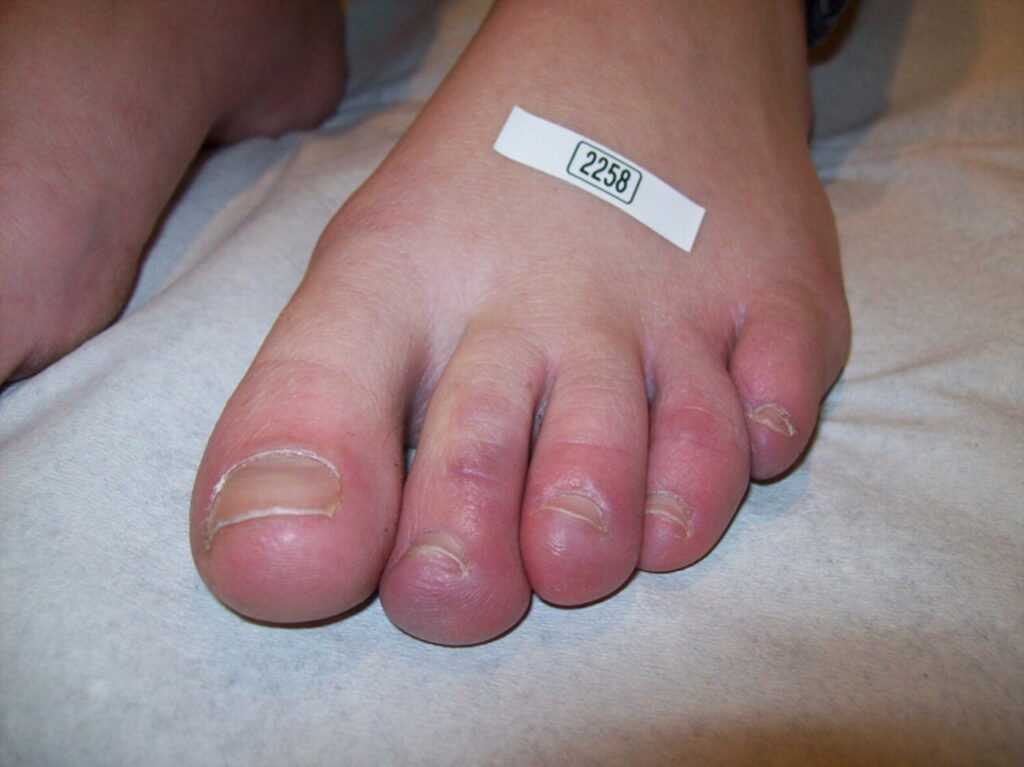Imagine this: it’s a cold winter day, and your child is happily playing outside, completely engrossed in building a snowman. But as the frosty air nips at their fingers and toes, little red bumps start appearing on their skin. Don’t worry, it’s not frostbite – it’s chilblains, a common condition in children during colder months. In this article, we’ll explore what exactly chilblains are, how to recognize them, and most importantly, how to treat and alleviate this discomfort for your little one. Let’s get started!

What are Chilblains?
Chilblains, also known as pernio, are painful and itchy bumps that typically appear on the toes, fingers, or other extremities in response to cold temperatures. They are a common condition among children and are caused by the blood vessels in the skin narrowing in response to cold weather. This narrowing can lead to poor circulation and inflammation, resulting in the development of chilblains.
Definition
Chilblains, in simple terms, are small, red, and itchy bumps that form on the skin when it is exposed to cold temperatures for an extended period of time. They are a localized reaction of the skin to the cold and can cause discomfort and pain.
Causes
Chilblains are primarily caused by the body’s abnormal response to cold temperatures, especially when there is a sudden change in temperature. When the body is exposed to cold, the blood vessels in the skin constrict, reducing blood flow to the extremities. This decreased blood flow can lead to the development of chilblains. Other factors that contribute to the development of chilblains include poor circulation, inadequate clothing, and a history of chilblains in the family.
Recognizing Chilblains in Children
Recognizing chilblains in children is essential for prompt treatment and prevention of complications. Although the symptoms of chilblains may vary from child to child, there are some common signs to look out for.
Symptoms
The most common symptoms of chilblains in children include red or purple bumps on the skin, usually on the toes, fingers, or ears. These bumps may be itchy and can cause a burning or tingling sensation. In severe cases, the bumps may also be accompanied by blisters or ulcers. Children may also experience swelling in the affected area and have difficulty moving or using the affected extremity.
Risk Factors
Certain risk factors can increase the likelihood of a child developing chilblains. Children with poor circulation, such as those with Raynaud’s phenomenon, are more prone to developing chilblains. Other risk factors include a family history of chilblains, living in cold and damp environments, and wearing tight or inadequate footwear. Additionally, children with certain medical conditions, such as lupus or diabetes, may also have an increased risk of developing chilblains.
Diagnosis
Diagnosing chilblains is usually based on a physical examination and a review of the child’s medical history. The doctor will examine the affected areas and inquire about any symptoms or exposure to cold temperatures. In some cases, the doctor may perform additional tests, such as a blood test, to rule out other conditions that may have similar symptoms.

Preventing Chilblains in Children
Prevention is key when it comes to chilblains in children. By taking certain preventive measures, parents and caregivers can greatly reduce the risk of their child developing chilblains.
Wearing Appropriate Clothing
One of the most effective ways to prevent chilblains in children is to ensure they wear appropriate clothing. This includes warm socks and shoes that provide adequate insulation. It is important to dress children in layers, as this helps trap heat and keeps their body temperature regulated. Avoiding tight-fitting footwear is also crucial, as tight shoes or boots can restrict blood circulation and increase the risk of chilblains.
Keeping Warm
Keeping children warm is essential for preventing chilblains. This includes encouraging them to wear gloves or mittens to protect their hands and covering their ears with a hat or earmuffs. Thermal clothing, such as long johns or thermal underwear, can provide additional insulation and help maintain body heat. Avoiding prolonged exposure to cold temperatures is also important, especially in wet or windy conditions.
Avoiding Exposure to Cold and Humidity
Minimizing exposure to cold and humidity can significantly reduce the risk of chilblains. Encourage children to stay indoors when the weather is extremely cold and to limit their time outdoors in damp conditions. If children do need to be outside, it is important to ensure they are adequately dressed and have access to warm shelters or heated areas. Additionally, avoiding activities that cause the hands or feet to become excessively wet or damp, such as wearing wet socks or gloves, can help prevent chilblains.
Treating Chilblains in Children
In the unfortunate event that a child does develop chilblains, there are several treatment options available to alleviate symptoms and promote healing.
Self-Care Measures
For mild cases of chilblains, self-care measures can often provide relief. Encouraging the child to keep the affected area clean and dry is vital, as moisture can exacerbate symptoms. Applying a topical cream or ointment, such as a corticosteroid cream, can help reduce inflammation and itchiness. Pain relievers, such as ibuprofen or acetaminophen, can be used to alleviate discomfort. It is important to avoid scratching or picking at the chilblains, as this can lead to infection.
Medical Treatments
In more severe cases of chilblains, medical treatments may be necessary. A doctor may prescribe medications, such as vasodilators, to improve blood circulation and reduce inflammation. In some cases, a doctor may recommend using a specialized dressing or bandage to protect and promote healing of the chilblains. If the chilblains develop into blisters or ulcers, antibiotics may be prescribed to prevent infection.

Home Remedies for Chilblains
In addition to medical treatments, there are several home remedies that can help alleviate symptoms and promote healing of chilblains.
Warm Water Soaks
Soaking the affected area in warm water can help alleviate pain and itching associated with chilblains. Fill a basin or tub with warm water, making sure it is not too hot, and allow the child to soak the affected extremity for 15-20 minutes. Adding epsom salt or a few drops of lavender oil to the water can provide additional relief. After the soak, gently pat the area dry and apply a moisturizer to keep the skin hydrated.
Moisturizing
Moisturizing the affected area regularly is important for preventing dryness and cracking of the skin. Use a gentle moisturizer or lotion specifically designed for sensitive skin and apply it to the chilblains at least twice a day. Avoid using harsh soaps or lotions that contain fragrances or alcohol, as these can further irritate the skin.
Avoiding Scratching
Although chilblains can be itchy, it is important to avoid scratching or picking at them. Scratching can damage the skin and increase the risk of infection. Encourage the child to resist the urge to scratch and provide distractions or alternatives, such as a stress ball or fidget toy, to help divert their attention away from the chilblains.
When to Seek Medical Attention
While most cases of chilblains can be managed at home, there are instances when medical attention should be sought.
Severe Symptoms
If a child experiences severe symptoms, such as intense pain, deep ulcers, or signs of infection, it is important to seek medical attention immediately. These symptoms may indicate a more serious underlying condition or complications from chilblains that require medical intervention.
Persistent Symptoms
If the child’s symptoms persist or worsen despite home remedies and self-care measures, it is advisable to consult a healthcare professional. They will be able to assess the child’s condition and determine if further medical treatment or intervention is necessary.

Preventing Complications
By practicing proper care and hygiene, parents and caregivers can help prevent complications associated with chilblains.
Proper Care and Hygiene
Ensuring proper care and hygiene of the affected area is crucial for preventing complications. Teach children to keep the chilblains clean and dry by gently washing the area with mild soap and water. It is important to avoid using harsh soaps or scrubbing the chilblains vigorously, as this can further irritate the skin. Pat the area dry gently and apply a moisturizer or prescribed ointment as directed.
Regular Check-ups
Regular check-ups with a healthcare professional can help monitor the child’s condition and prevent complications. The doctor will assess the child’s progress, provide guidance on managing symptoms, and recommend any necessary lifestyle changes or treatments.
Long-Term Outlook for Children with Chilblains
While chilblains can be uncomfortable and sometimes painful, the long-term outlook for children with chilblains is generally positive.
Possible Recurrence
Chilblains can recur, especially in individuals with a predisposition to the condition. It is important for parents to remain vigilant and continue practicing preventive measures to reduce the risk of chilblains returning.
Managing Symptoms
By following the preventive measures outlined above and seeking timely medical attention, children can effectively manage their chilblains symptoms. It is important for parents and caregivers to educate themselves and their children about the condition, its causes, and ways to prevent and manage it.

Tips for Parents and Caregivers
As parents and caregivers, there are additional steps you can take to support children with chilblains.
Educating Children about Chilblains
Educating children about chilblains can help them understand the condition and take proactive steps to prevent it. Explain to them the importance of keeping warm, wearing appropriate clothing, and avoiding exposure to extreme cold and wet conditions. Encouraging open communication and addressing any concerns or questions they may have can help alleviate anxiety.
Creating a Warm Environment
Creating a warm and cozy environment at home can help children manage their chilblains symptoms and prevent flare-ups. Ensure the home is adequately heated during cold weather and provide warm blankets and clothing for extra insulation. Using space heaters or electric blankets can help create localized warmth if needed. Encourage children to dress in layers and wear warm socks and slippers indoors.
Conclusion
Chilblains are a common condition among children that can cause discomfort and pain. By recognizing the symptoms, taking preventive measures, and seeking timely medical attention, parents and caregivers can effectively manage and alleviate the symptoms of chilblains in children. With proper care, education, and a warm environment, children with chilblains can lead a healthy and comfortable life.